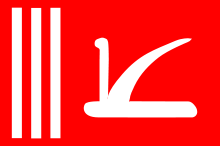Politics of Jammu and Kashmir

The state of Jammu and Kashmir has historically consisted of four political regions. Ladakh towards the east bordering China, Jammu towards the south bordering the states of Himachal Pradesh, Punjab and Pakistan, Kashmir Valley towards the west bordering Pakistan administered Kashmir and Baltistan areas towards the North bordering Xinjiang and Gilgit Baltistan. Baltistan and a part of Kashmir are under Pakistan control. Aksai Chin, claimed by India to be a part of Ladakh, is under Chinese control, while the rest is under Indian control. Pakistan and Indian controlled parts are separated by Line of Control (LOC).
Like all the states of India, Indian controlled parts of Jammu & Kashmir have a multi-party democratic system of governance. Main political parties include the Jammu & Kashmir National Conference (NC), the Indian National Congress (Congress), Bharatiya Janata Party[1] and the Jammu and Kashmir People's Democratic Party (PDP). Presently, PDP with 28 seats is the 1st largest and Bharatiya Janata Party with 25 seats is the second largest party in 2014 election in the 87-member house.
The Constitution of India grants Jammu and Kashmir special autonomous status as a temporary provision through Article 370. However, some Muslim Kashmiris demand greater autonomy and sovereignty and some even demand independence from India, while some non-Muslims would like to see the state fully integrated into India. A part of Kashmiri Muslims also have inclination towards Pakistan since a small part of Kashmir is under Pakistan Control. There has also been a number of separatist movements, both political and militant, mostly led by hardline Muslim leaders. However, in recent years Kashmiri Muslims have been leaning towards being in India due to economic reasons.[2][3]link dead
Jammu and Kashmir is the only Indian state that has its own flag. Designed by the Government of India, the state flag of Jammu and Kashmir is the native plough on a red background which is a symbol of labour. The three stripes represent the three administrative divisions of the state, namely Jammu, Valley of Kashmir, and Ladakh.[4]
Furthermore a 2008 report by United Nations High Commissioner for Refugees determined that Indian administered Kashmir is only 'Partly free'.[5]
See also
- Kashmir conflict
- Hurriyat and Problems before Plebiscite
- Jammu and Kashmir Legislative Assembly election, 2014
- Government of Jammu and Kashmir
References
- ↑ BJP launches website ahead of Modi's rally in Jammu & Kashmir
- ↑ A growing peace constituency
- ↑ "Welcome to Frontline : Vol. 29 :: No. 13". Hinduonnet.com. Retrieved 2012-06-28.
- ↑ http://jkgad.nic.in/statutory/Rules-Constitution-of-J&K.pdf
- ↑ United Nations High Commissioner for Refugees (2008-07-02). "Refworld | Freedom in the World 2008 - Kashmir [India]". UNHCR. Retrieved 2012-06-28.
Further reading
- Chowdhary, Rekha. "Electoral Politics in the Context of Separatism and Political Divergence: An Analysis of 2009 Parliamentary elections in Jammu & Kashmir". South Asia Multidisciplinary Academic Journal, 3, 2009.